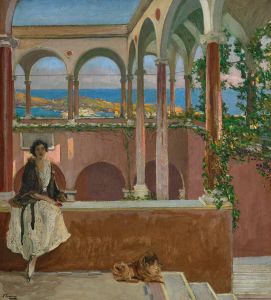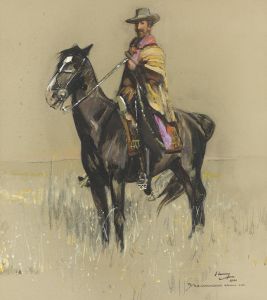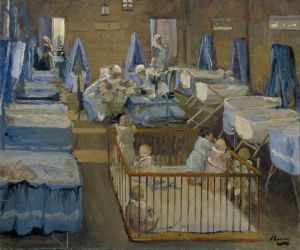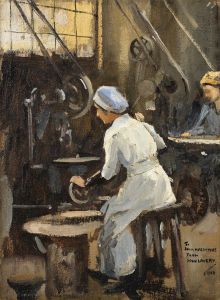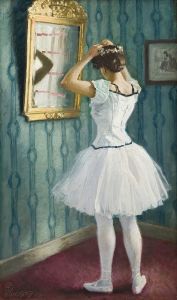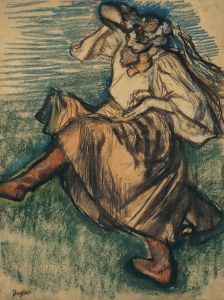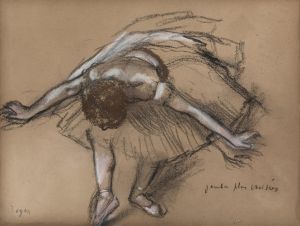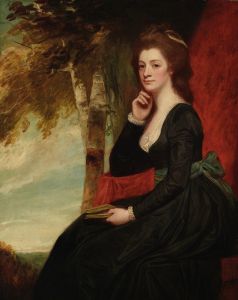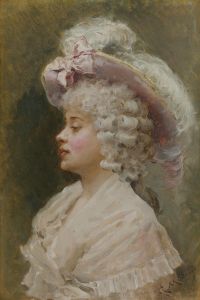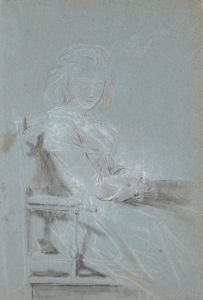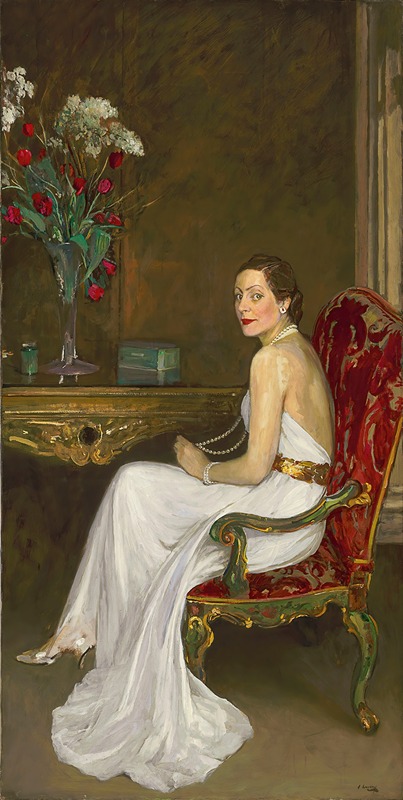
The Lady in White, Viscountess Wimborne
A hand-painted replica of Sir John Lavery’s masterpiece The Lady in White, Viscountess Wimborne, meticulously crafted by professional artists to capture the true essence of the original. Each piece is created with museum-quality canvas and rare mineral pigments, carefully painted by experienced artists with delicate brushstrokes and rich, layered colors to perfectly recreate the texture of the original artwork. Unlike machine-printed reproductions, this hand-painted version brings the painting to life, infused with the artist’s emotions and skill in every stroke. Whether for personal collection or home decoration, it instantly elevates the artistic atmosphere of any space.
Sir John Lavery's painting "The Lady in White, Viscountess Wimborne" is a notable work by the renowned Irish painter, celebrated for his portraits and depictions of high society. Lavery, born in 1856 in Belfast, became one of the leading portraitists of his time, known for his ability to capture the elegance and poise of his subjects. His works are often associated with the late 19th and early 20th-century British and Irish art movements.
"The Lady in White, Viscountess Wimborne" features Alice, Viscountess Wimborne, who was a prominent figure in British aristocracy. Alice was married to Ivor Guest, 1st Viscount Wimborne, a British peer and businessman. The painting is a testament to Lavery's skill in portraying the grace and sophistication of his sitters, often set against lush and opulent backgrounds that highlight their status and elegance.
Lavery's style is characterized by a fluid brushwork and a keen attention to detail, which is evident in this portrait. The use of light and shadow in the painting enhances the delicate features of Viscountess Wimborne, while the white attire she dons symbolizes purity and high social standing. Lavery's ability to capture the texture of fabrics and the subtle nuances of skin tones adds a lifelike quality to the portrait, making it a striking example of his work.
Throughout his career, Lavery was commissioned to paint numerous members of the British aristocracy and other notable figures, which helped cement his reputation as a leading portrait artist. His works were exhibited widely, and he was a regular contributor to the Royal Academy exhibitions. Lavery's portraits are often noted for their psychological depth, as he had a unique ability to convey the personality and character of his subjects through his art.
The painting of Viscountess Wimborne is part of a larger body of work that reflects Lavery's engagement with the social and cultural milieu of his time. His portraits not only serve as artistic achievements but also as historical documents that provide insight into the lives and fashions of the British elite during the late Victorian and Edwardian eras.
Lavery's contribution to art extends beyond his portraits. He was an official war artist during World War I, and his works from this period provide a poignant record of the war's impact on society. His legacy is preserved in numerous public and private collections, with his works held in institutions such as the National Portrait Gallery in London and the Ulster Museum in Belfast.
In summary, "The Lady in White, Viscountess Wimborne" exemplifies Sir John Lavery's mastery in portraiture, capturing the elegance and stature of his subject with finesse. The painting stands as a significant piece within Lavery's oeuvre, reflecting both his artistic skill and his connection to the social fabric of his time.





